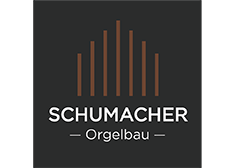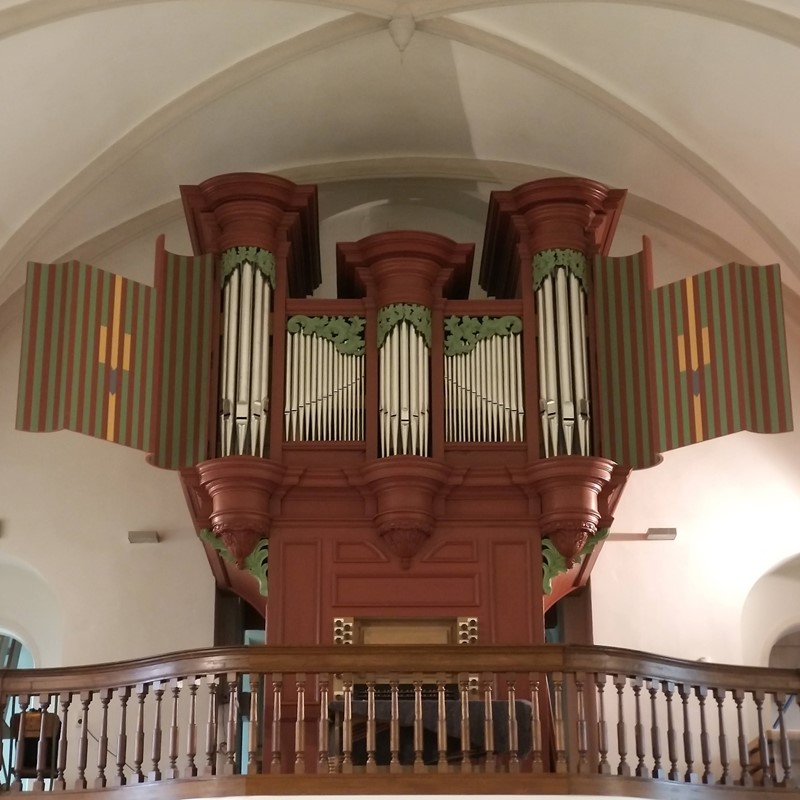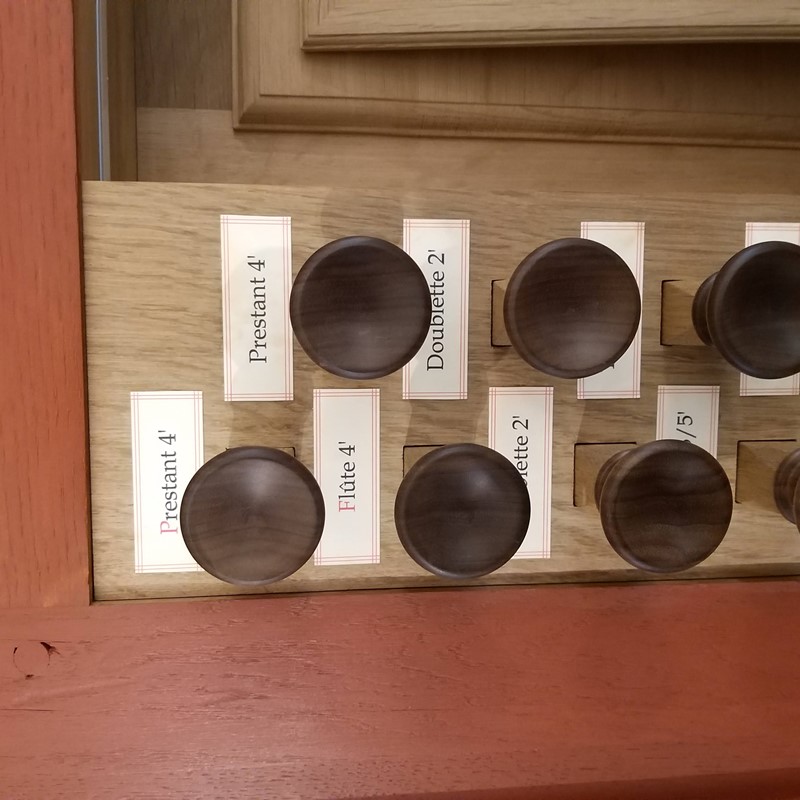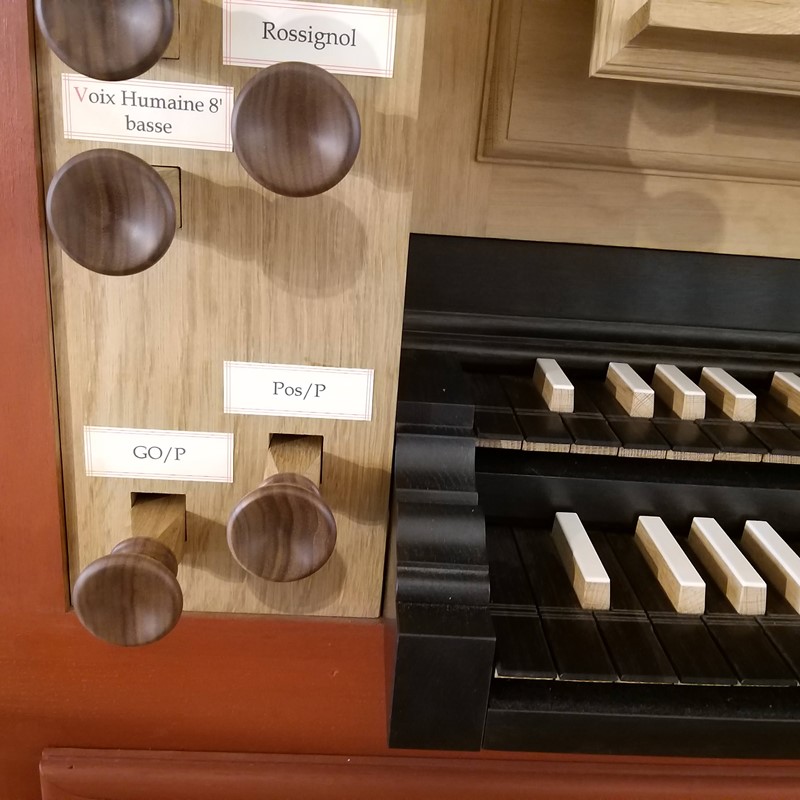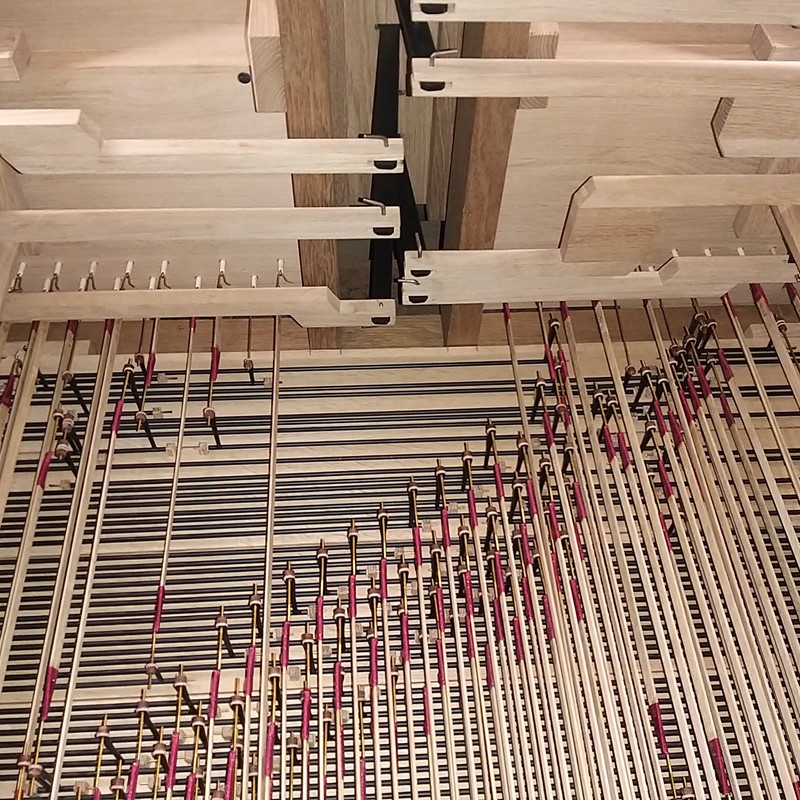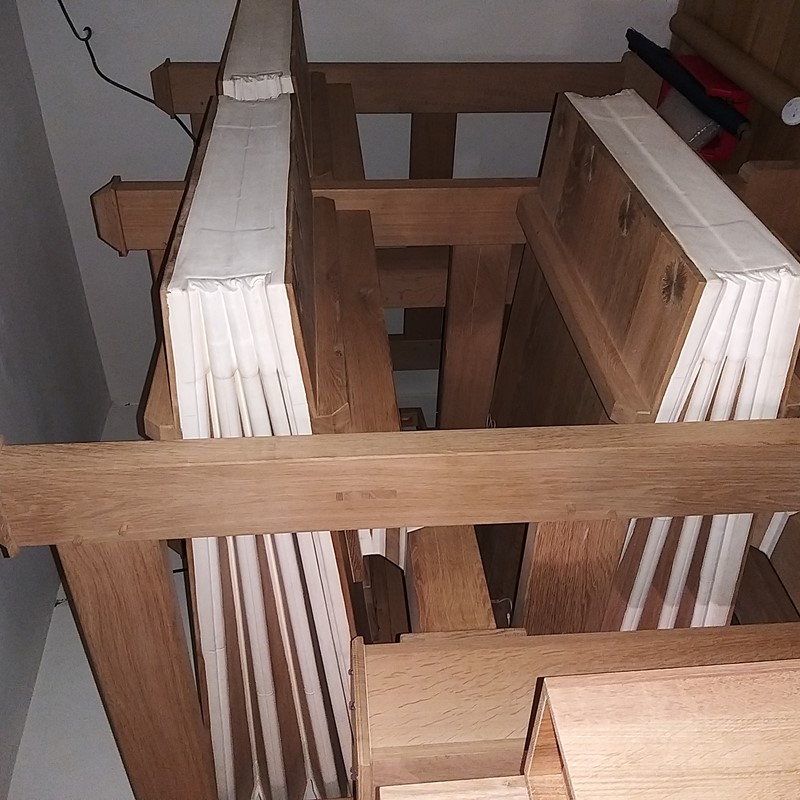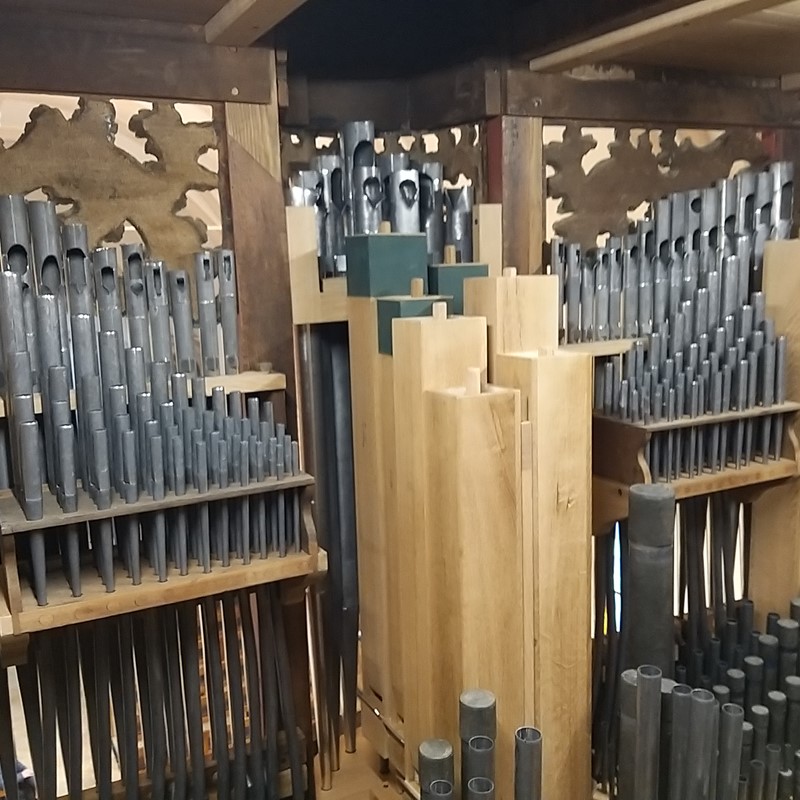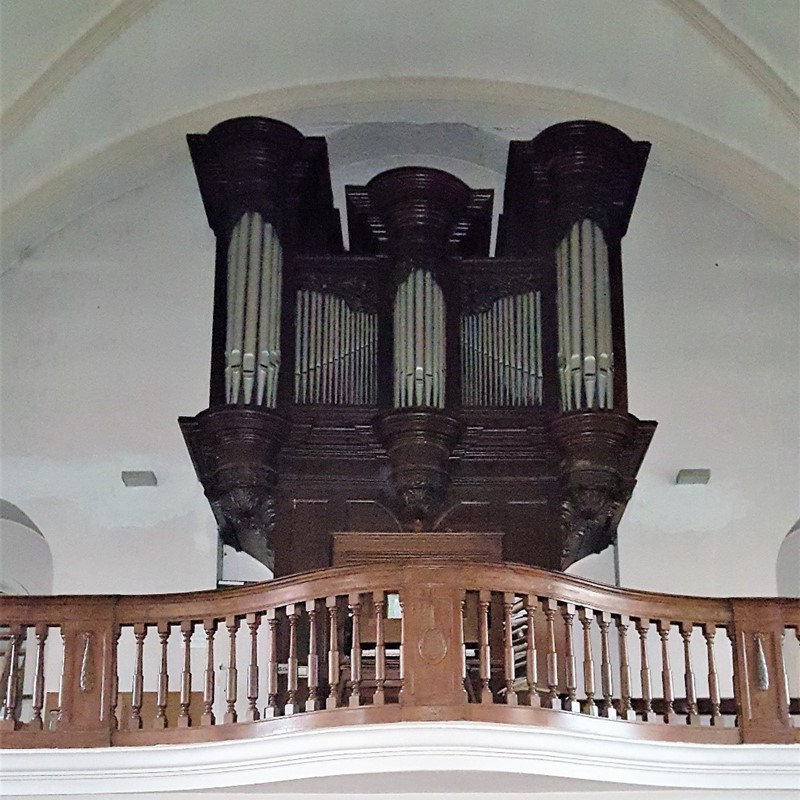This organ is attributed to Philippe II Le Picard, the founder of the classical Liège organ building school of the 18th century.
The origins of the organ are not entirely clear, but it probably originally came from the church of Saint-Nicolas-au-Pont in Liège, which was demolished in 1805. Arnold Graindorge then moved it to Boorsem, where it was completely rebuilt and modernized by Theodoor Ruëf in 1902, with only the essential elements of the organ case and 4 stops remaining from the original organ.
The restoration concept meant that the organ was returned to a 2-manual organ typical of the period, although an independent pedal with 3 stops was added. As only a few instruments by Philippe II Le Picard have survived, including one in Gronsveld (NL), models by his son Jean-Baptiste Le Picard were also used.
The color scheme, which was partially revealed during the restoration and could therefore be reconstructed, is quite unusual for classical Liège organ building. Green and red are often found in the coats of arms of the prince-bishops of Liège and therefore possibly refer to them.
The missing wing doors have been reconstructed and decorated with a contemporary design.
The inauguration will take place on June 2, 2024.
Stop list
Grand Orgue
Bourdon 8'
Prestant 4'
Flûte 4'
Nazard 2 2/3'
Doublette 2'
Tierce 1 3/5'
Fourniture IV
Sexquialtera II
Cornet IV
Trompette 8'
Voix humaine 8'
GO - POS
Positif
Bourdon 8'
Prestant 4'
Nazard 2 2/3'
Doublette 2'
Tierce 1 3/5'
Larigot 1 1/3'
Cymbale III
Cromorne 8'
Pédale
Soubasse 16'
Octave 8'
Trompette 8'
I - P
II - P
